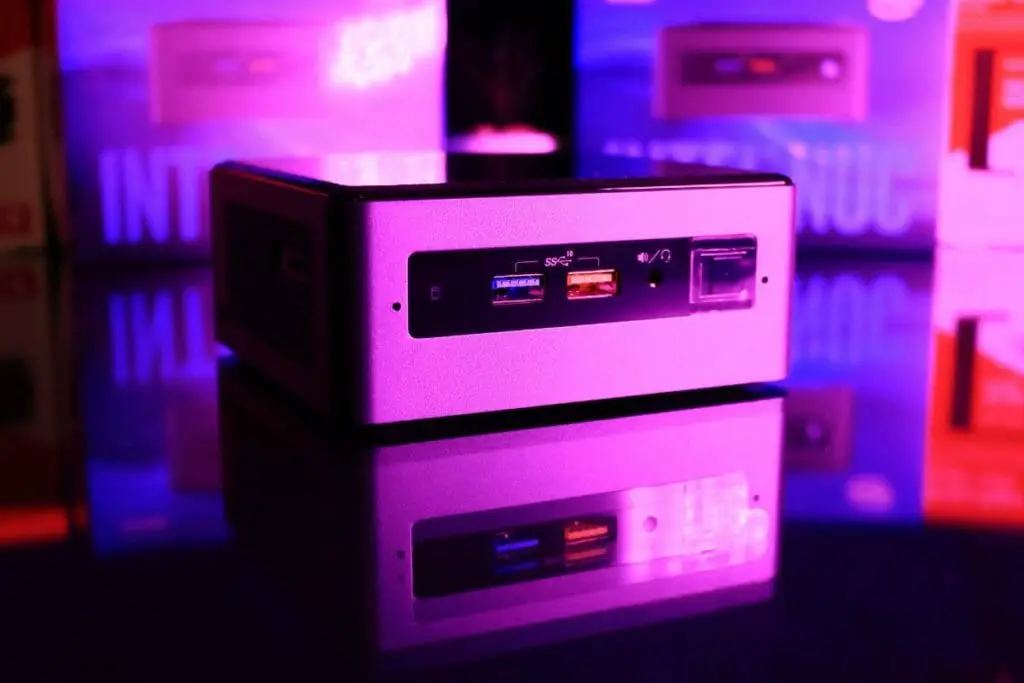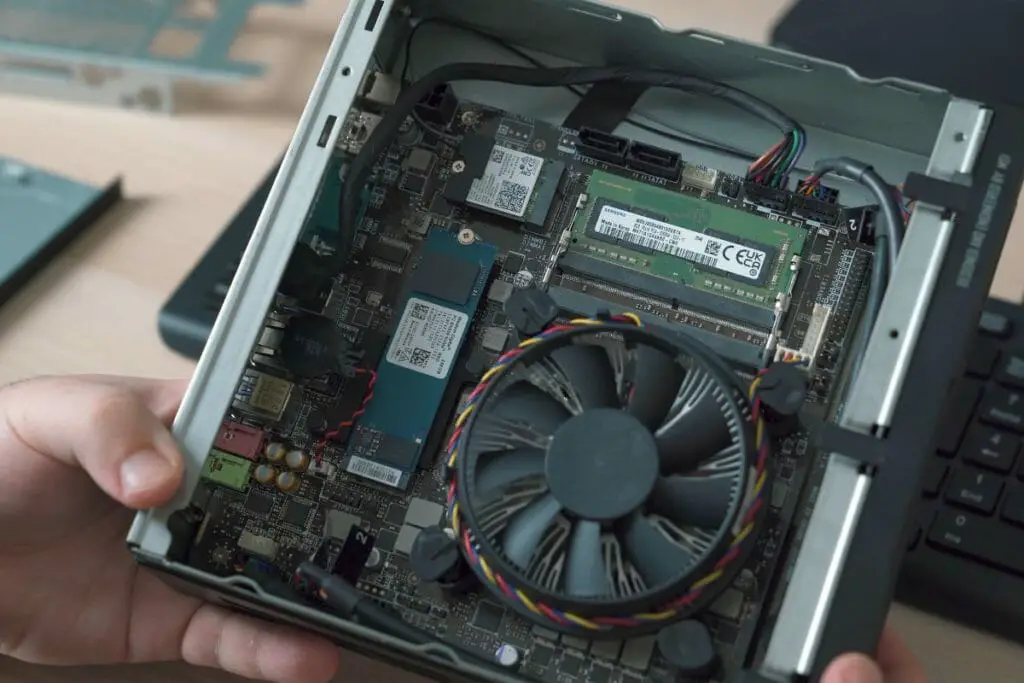
Raspberry Pi and Mini computers are two types of small, affordable, and versatile computing devices that have gained popularity in recent years. While both devices offer low-cost computing solutions, they have distinct features and applications that set them apart from each other.
Raspberry Pi was introduced in 2012 as a credit-card-sized computer designed to promote the teaching of basic computer science in schools. It quickly became popular among hobbyists and developers for its flexibility and ease of use.
On the other hand, Mini computers have been around for a while but have gained more attention in recent years as an alternative to traditional desktop computers.
In this article, we will explore the similarities and differences between Raspberry Pi and Mini computers. We will discuss the hardware components, operating systems, programming languages, and use cases of both devices. We will also compare their performance, price, and suitability for different applications. By the end of the article, you should have a better understanding of which device is better suited for your needs.
Raspberry Pi Vs DELL OptiPlex 3020M Mini PC Vs HP ProDesk 600 G2 Mini: What’s The Difference?
Raspberry Pi – An Overview
Raspberry Pi is an incredible Linux device that can be used for many different things but is most notably used by individuals who want to explore computer science. This device is great for uses like programming, and for the use of things like Python.
It is much like a desktop computer – so you can play video games, browse the internet, do word processing, make spreadsheets, and so much more.
However, it is much smaller and comes at a great price, which makes it a popular option for any computer enthusiast.
Pidora and Raspbian are the two most popular Raspberry Pi software distributions – based on the Fedora and Debian operating systems, respectively.
For anyone planning on using Raspberry Pi, it would be a good idea to select an operating system that is closer to one that you are familiar with – at least initially.
DELL OptiPlex 3020M Mini PC – An Overview
First released in 2013, the Dell OptiPlex 3020M is a type of pre-built desktop computer created for business purposes.
While this is an older option, it is still a good contender for both office and home use. However, it cannot be upgraded properly for gaming purposes.
This Micro form factor computer is among the smallest PC options available on the market in terms of size. It’s compact and has an external power supply.
Because of this, it is easy to upgrade and additional storage and RAM can be added.
HP ProDesk 600 G2 Mini
First released in 2016, the HP ProDesk 600 G2 Mini is an excellent pre-built business desktop computer. Despite its age, it is still a great option for use in the office and at home, and is a good choice for gaming, though it cannot be properly upgraded.
As a Micro form factor computer, this device is compact, easy to upgrade, and comes with an external power supply. However, it has very little, or even no, expandability.
This computer is one of the best pre-built OEMs that you can upgrade for top-quality gaming on a budget. When fully upgraded, it runs at 1080p resolution with 60fps and is able to play all the most popular games.
Key Differences Worth Mentioning

The Mini PCs Have No Initial GPIO Capability
Depending on what you intend to use your device for, the mini PCs not having GPIO may not be important at all. However, if this is something that you will require for the project you have in mind (e.g. operating LEDs), this will be very useful to know.
You can add GPIO capability via Arduino or other means on mini PCs, but the Raspberry Pi comes with it already.
The Mini PCs Use Windows
Again, this may be important to you, or not at all. Raspberry Pi will use Linux rather than Windows or MacOS as standard, which means that it is an entirely new system for most people.
This can make it more challenging to use these devices, but it also opens you up to a world of new possibilities.
Similarities Between The Raspberry Pi And The Mini PCs
In reality, there are very few similarities between the Raspberry Pi and the Mini PCs we have mentioned here. While they are all great options for different purposes, they have differing running systems, processors, pricing, and much more.
That being said – there are various models of Raspberry Pi to consider as well that provide different specifications and use cases depending on your project needs.
Comparison Table
We have tried to make it easier to compare these three devices by putting everything into a table. Below are all the important differences between these options that you need in order to make an informed decision if you are going to be working on a project.
| What is Being Compared | Raspberry Pi 4 | DELL OptiPlex 3020M Mini PC | HP ProDesk 600 G2 Mini |
| Memory | 1 GB, 2 GB, 4 GB, and 8 GB LPDDR4-3200 SDRAM | 2 GB, 4 GB, and 8 GB DDR3 Ram (upgradable) | 256 GB |
| Processor | Broadcom BCM2711 system-on-chip, runs on 1.5-GHz quad-core 64-bit ARM Cortex-A72 CPU @ 1.5 GHz. | Intel Core i5 4590T 2.0Ghz Processor | Intel Core i5-6500T (4 Cores / 4 Threads) 35W TDP |
| Network | Built-in Bluetooth and Wi-Fi functionality, supports Gigabit Ethernet | Free Dlink USB Wi-Fi Dongle Included Integrated network Realtek RTL8151GD Ethernet capable of 10/100/1000 Mb/s communication | Bluetooth 4.2, Intel 7265 802.11ac Wi-Fi,1Gbps Intel I219LM Ethernet |
| I/O | Two USB 2.0 ports, two USB 3.0 ports, Display Serial Interface (DSI), Camera Serial Interface (CSI), | Two USB 3.0 ports, four USB 2.0 ports, RJ-45 Network Port, VGA port, Display Ports | One USB 3.0 Type C port, seven USB Type A ports, one modular port |
| GPIO | 40 GPIO pins | Can add GPIO capability via Arduino or other means | Can add GPIO capability via Arduino or other means |
| Audio | 3.5-mm analog audio-video jack | Integrated audio, Realtek HDA Codec ALC3234 | Headphone and microphone ports |
| Video | Two Micro-HDMI ports | One HDMI port | No HDMI, requires an onboard DisplayPort |
| Dimensions (mm) | 85.6 mm × 56.5 mm | 36 mm x 176 mm x 180 mm | 34 mm x 177 mm x 175 mm |
| Operating Systems | Supports Raspberry Pi OS RetroPie, Ubuntu, OSMC, other kinds of third-party images | Windows 10 Pro | Windows 7 Professional 64 |
| Display | 4K 60 fps with dual-screen functionality | 4K higher than 60 fps with dual-screen functionality | 1080p resolution 60+ fps, dual-screen functionality |
| Pricing | Usual pricing for 1, 2, 4, and 8 GB Raspberry Pi 4 is $35, $35, $55, and $75 respectively. Due to the chip shortage, prices have increased to around $100, $125, $150, and $175 respectively. | Prices vary from $129.99 to $370 | MSRP $1,129.00 |

Final Thoughts
The Raspberry Pi 4 is a classic option for people who are interested in computer technology and diving into the world of tech. With Linux, there are so many potentials at your fingertips.
However, the mini PCs come as pre-built devices that are basically ready to go and still offer a lot to their users.
With Windows, you are likely to have an easier time navigating these devices, and it won’t feel like such a struggle.
Ultimately, you will need to bear in mind what you would like to use your device for and go from there.
